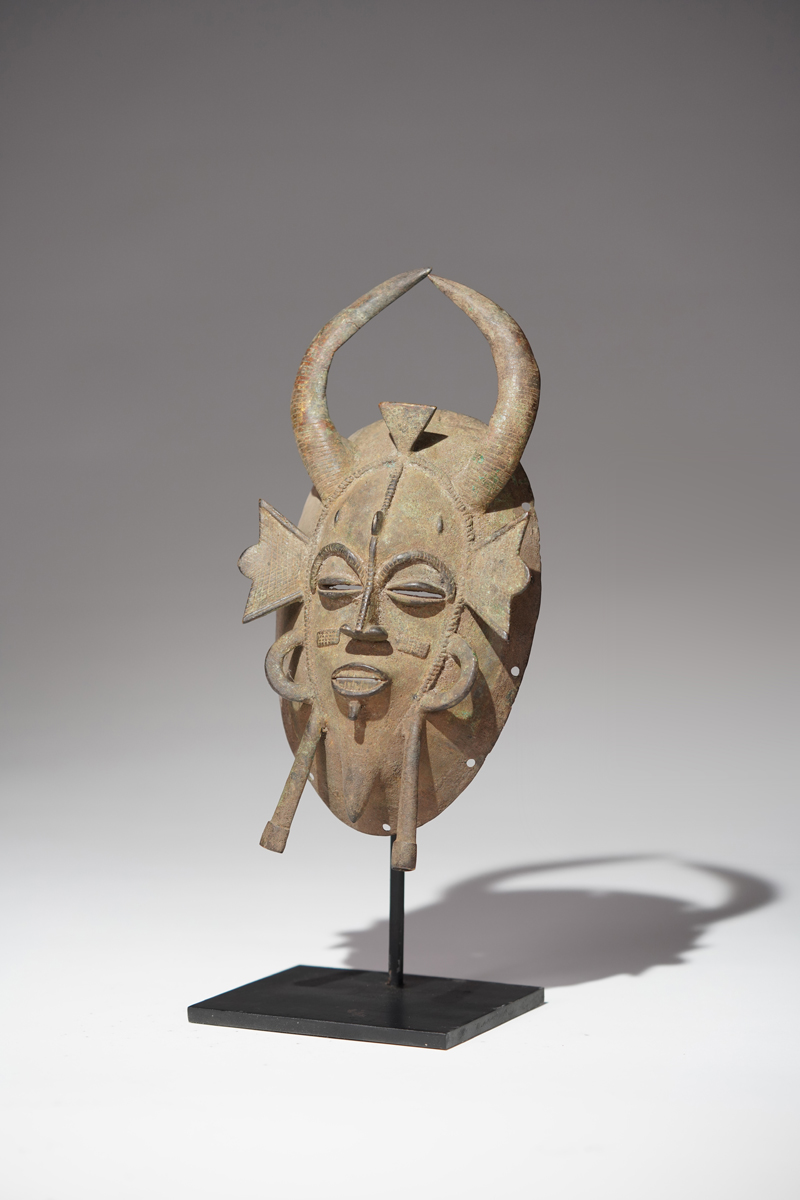|
A Senufo Kpelie brass mask, Ivory Coast, Central Korhogo region, protruding, oval mouth showing teeth, a small stout nose, slit thin narrow eyes with rounded eyebrows, antelope-like horns touching their tips together, the facial boarders are decorated in the Kpelie style, signs of age and use; incl. stand. Kpelie-masks were worn during funeral sessions by the Poro society. These funeral festivities are marked by masquerades, which symbolically expresses the fundamental dualities in Senufo Thought: male/female, body/spirit, life/death. In general this type of mask is symbolizing an ideal woman. The unique features which characterize the Kpelié mask include elongated flanges radiating from the bottom part of the mask, which are a reference to the hornbill bird. The horns on the mask refer to the ram, an important sacrificial animal. The nodules on the forehead represent palm nuts as well as vulvas; they are flanked by cicatrization marks that symbolize the twins born to the primordial couple. The significance of the double face are not known, but double- and single- faced Kpelié are used interchangably. Facing the Mask, Herreman, Frank, Museum for African Art. s. publ. Lit.: Holas, Bohumil, L'art sacré sénoufo. Ses différentes expressions dans la vie sociale, Limoges, 1978. Herreman, Frank, Facing the Mask, Museum for African Art, New York, 2002. Till Foerster, Divination bei den Kafibele-Senufo. Zur Aushandlung und Bewältigung von Alltagskonflikten, Berlin, 1985. Wolfgang Jaenicke, Forbidden games. sold Height: 38 cm incl. stand |
 photo: wolfgang-jaenicke.com, for more information, please write us an e-mail with the identification number of the photo identification no. XBD121764.jpg |